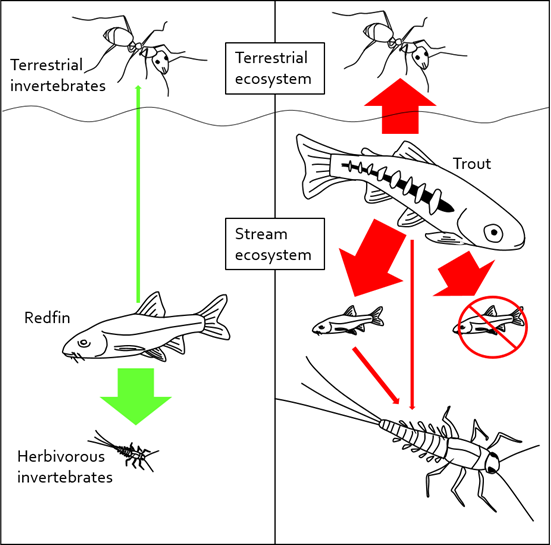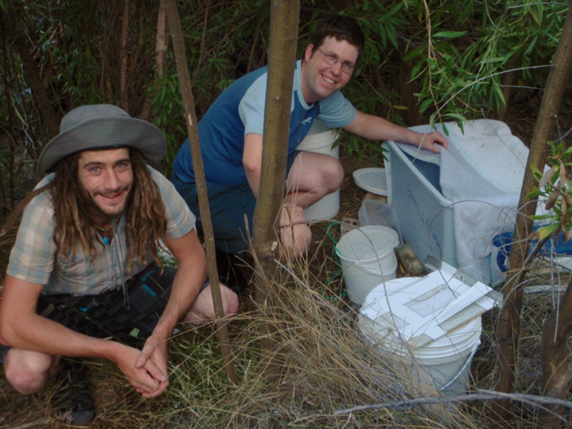17 August 2016 | By Jeremy Shelton
A month-long field experiment by Jeremy Shelton (C·I·B Post-doc) and Darragh Woodford (C·I·B Associate), showed that alien rainbow trout (Oncorhyncus mykiss) and native Breede River redfin (Pseudobarbus burchelli) perform different roles in the food webs of fynbos mountain streams.
In freshwater ecosystems, animals rely on each other to live – some get eaten and some prey on other species. This dependence, also described as food webs, can be affected when alien fish replace native fish species. Rainbow trout was introduced to the Cape Floristic Region in the 1800’s for angling, but has since become a major predator in fynbos streams, where they replaced the native fish species.
In their experiment, Shelton and Woodford examined what happens to small animals, such as insects, crustaceans, molluscs, and worms that live in water (also called aquatic invertebrates), after rainbow trout replaced or reduced Breede River redfin numbers. To do this, they used cages containing the different fish and compared them to cages without fish.
The experiment, conducted in a small tributary of the Breede River, showed that redfin regulate the abundance (the number of individuals) of aquatic invertebrates more than trout do. Analyses of fish gut also showed that Breede River redfin consumed mostly aquatic invertebrates while rainbow trout ate mostly invertebrates that are found on land.

“This could explain why invertebrates feeding on plant material often flourish in streams where rainbow trout have replaced Breede River redfin” explains Shelton, lead author of the paper in Austral Ecology.
Interestingly, the observed pattern contrasts results found elsewhere in the Southern Hemisphere, with trout invasions generally leading to a reduction, rather than an increase, in invertebrate numbers.
“The finding, that the replacement of Breede River redfin by rainbow trout frees aquatic invertebrates from predation, broadens our understanding of community-level impacts of invasive alien fish species. This should be factored into management decisions in the Cape Floristic Region” says Shelton.
Read the paper in Austral Ecology
For more information, contact Jeremy Shelton at jembejem@gmail.com

